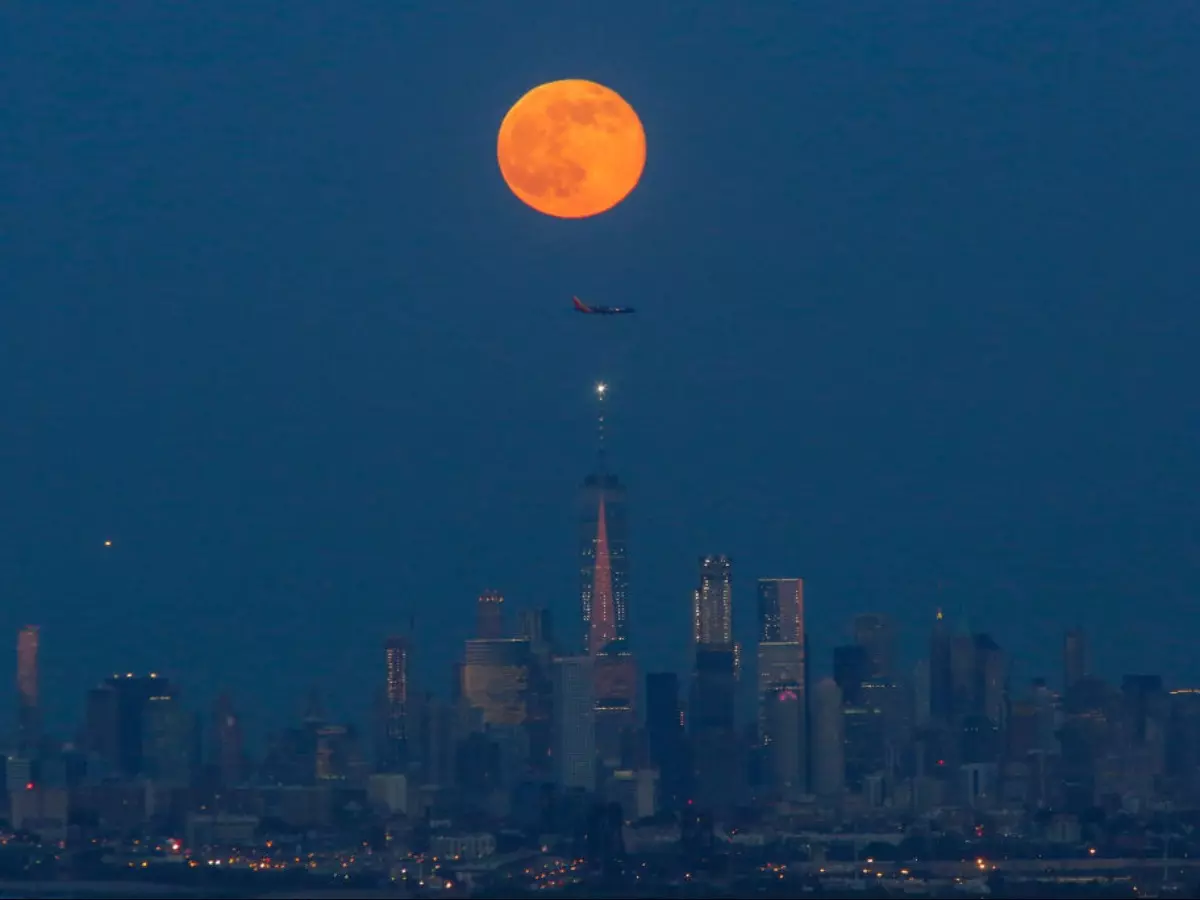Here's Why This Year's Penumbral Lunar Eclipse Is Being Called The 'Strawberry Moon'
The lunar eclipse will be visible only in some parts of the world for a short duration. Skywatchers in much of Asia (including India), Australia, Africa, South/East South America, much of Europe, Pacific, Atlantic, Indian Ocean and Antarctica can witness the penumbral lunar eclipse tomorrow.

The full 'strawberry moon' will rise on the evening of June
5 and, no, it's not going to be as red as a strawberry. The name given for this year's
lunar eclipse coincides with the harvest time for the soft fruit, hence the name.
The Maine Farmer's Almanac first published Indian names for the full moons back in the 1930s. According to them, June marks the beginning of the short strawberry season in the North-Eastern United States.
 Twitter/@MothershipSG
/Image For Representation
Twitter/@MothershipSG
/Image For Representation
These names come from traditional names given by Native Americans and early colonial settlers who used the full moons as a way of keeping track of the planting and harvesting seasons.
The lunar eclipse will be visible only in some parts of the world for a short duration. Skywatchers in much of Asia (including India), Australia, Africa, South/East South America, much of Europe, Pacific, Atlantic, Indian Ocean and Antarctica can witness the penumbral lunar eclipse tomorrow.
Meanwhile, the rest of us can enjoy the full moon which will appear for about three days; from early Thursday morning to early Sunday morning. During the eclipse, the moon will, however, not be in the sky for most of the Americas says NASA.
'With the moon also particularly low in the sky this month, it¡¯s sure to dominate and even be visible in the afternoon and early evening,' Jamie Carter wrote in Forbes.
What is a penumbral lunar eclipse?
During the ¡®strawberry moon' eclipse, 57 per cent of the moon is expected to pass into the Earth¡¯s penumbra. A penumbral lunar eclipse happens when the Sun, Earth, and the Moon are imperfectly aligned.
In this case, the Earth blocks some of the Sun¡¯s light from directly reaching the Moon with the outer part of its shadow, also known as the penumbra. The next two lunar eclipses (also penumbral) of 2020 will be on 4-5 July and 29-30 November.
Post the June 5 lunar eclipse 2020, the next two lunar eclipses of 2020 will be visible on July 4 and 5. Post July, the lunar eclipses in 2020 on November 29 and 30.

On this year's lunar eclipse, American Space Agency NASA says, 'The Moon will be close enough to opposite the Sun that it will pass through part of the partial shadow of the Earth, called a partial penumbral eclipse of the Moon. During this eclipse the Moon will not be in the sky for most of the Americas. If we could see the Moon, the slight dimming during this eclipse will not be noticeable without instrumentation. For spacecraft at the Moon such as the Lunar Reconnaissance Orbiter (LRO), the reduction in solar power is noticeable.'
It is safe to look at a lunar eclipse with bare eyes and no special glasses are required for this.
